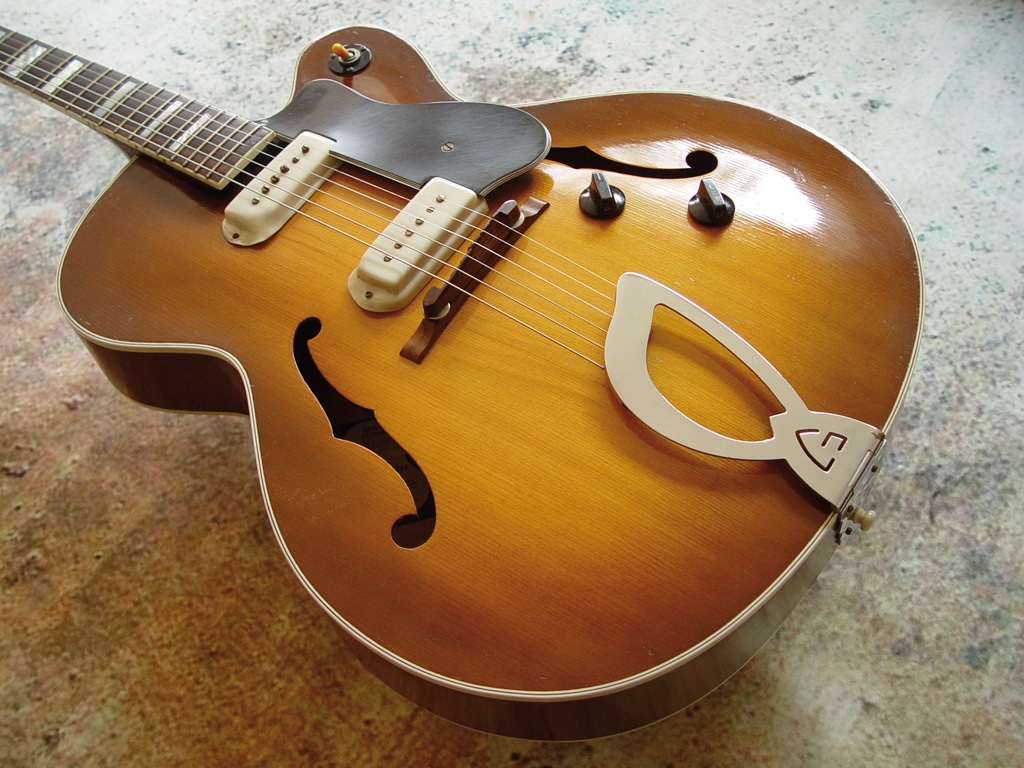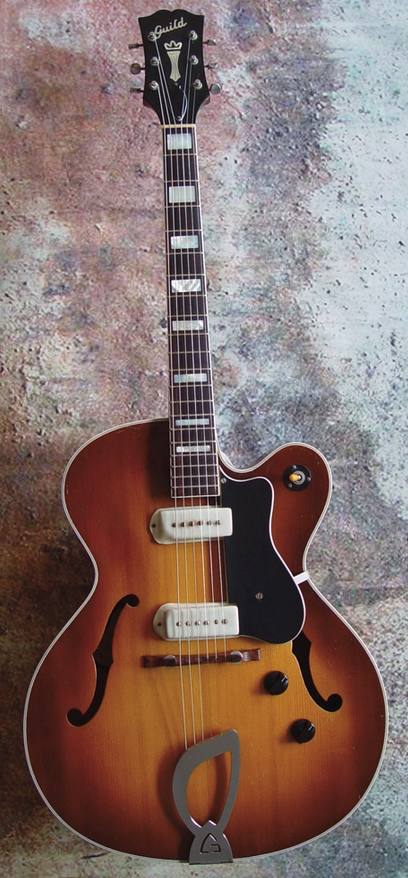An older friend of mine who owned a music store in Long Beach throughout the 1950s and beyond once mentioned that in L.A. at that time, the hottest-selling guitar was the Gibson ES-175.
The short scale, combined with the smaller and thinner body was the guitar the pros wanted. Apparently, the professionals back then were ready to give up on the larger archtop guitars that reigned on the bandstands; those guitars were unwieldy, designed to be acoustic, so quick to feed back, and were more prone to damage.
The ES-175 has all laminated and much less expensive, but was designed to be amped, not played acoustically. But from the dance floor, they still looked like the arch tops that generation of kids expected to see, and for my pal, whose favorite guitar was always an Epiphone DeLuxe before, found it a marvel. The guitar didn't wear him out after playing all night, and he loved it's ease and mobility on a crowded bandstand. He still took it out on jobs well into his 80s.
He also said he was one of the first Fender dealers. Leo used to deliver the guitars to him personally. He said they were a very hard sell until a couple of hotrods playing in the Country/Western swing bands began using Telecasters. Their bright tone matched the fiddles those bands had, and could compete with the steel guitar.
L.A. was the center of a huge musical shift throughout the 1950s and 60s as the big band sound began fading. When Leo brought the first Stratocaster he saw, he didn't think it would ever catch on. He was right, as far as L.A. went; the swing players in Texas went for the Strat over the Tele, and rockabilly's spread e took a few years. And then Dick Dale invented Surf music in San Diego, and Strat came into its own.
My buddy never did care for any Fenders much, but he sold a butt-load of them. He liked Leo Fender, who fixed an amp for him for free once.
By 1969, he sold his half of the store to his partner and moved to Idaho, where he had a sit-down gig in the Sun Valley Lodge for the next 20 years. Playing the Gibson 5-6 nights a week.
He got that job because he was already well known there. Beginning in the mid-1940s, he was hired to play the club car every weekend during the winters on the Sun Valley Express, a train that boarded in Long Beach and overnighted to Sun Valley all winter long.
When I knew him, he had added a repair shop onto the side of his house, and was mostly retired and playing cowboy on a few acres he bought long before the land rush to Sun Valley happened.
I haven't seen him since 2005, and he must be 95 or so by now.
A mutual friend recently said he had gone deaf, but he still plays the guitar even though he can't hear it any more except in his mind. His wife died, so his guitars are his company. He still has a daughter in the area who looks after him daily, but he lives alone.
A tough old bird.
So the magazine article did get a small detail wrong; the Les Paul wasn't the guitar to beat just yet in the mid-1950s. At least, not on the West Coast.

 www.gitarrebass.de
www.gitarrebass.de

 www-gitarrebass-de.translate.goog
www-gitarrebass-de.translate.goog
